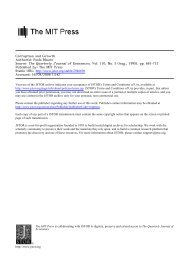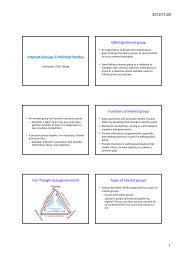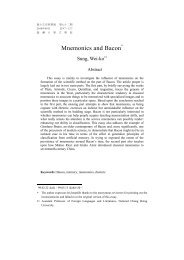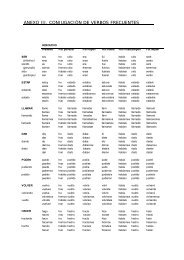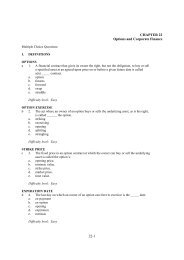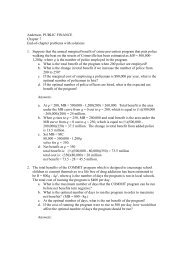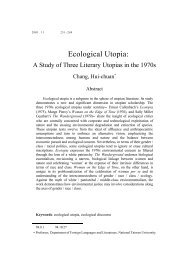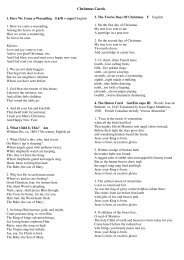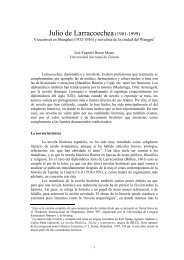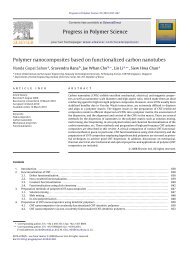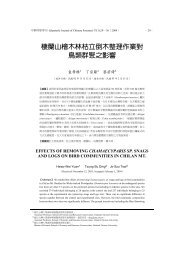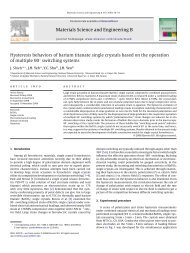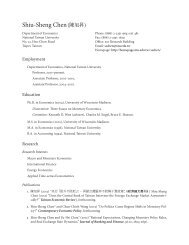Chapter 5 A Closed-Economy One-Period Macroeconomic Model
Chapter 5 A Closed-Economy One-Period Macroeconomic Model
Chapter 5 A Closed-Economy One-Period Macroeconomic Model
You also want an ePaper? Increase the reach of your titles
YUMPU automatically turns print PDFs into web optimized ePapers that Google loves.
6. The representative consumer chooses C and N s to maximize utility.<br />
The representative firm chooses N d to maximize profits.<br />
s d<br />
Market-clearing: N = N = N.<br />
Government budget constraint: T = G.<br />
<strong>Chapter</strong> 5 A <strong>Closed</strong>-<strong>Economy</strong> <strong>One</strong>-<strong>Period</strong> <strong>Macroeconomic</strong> <strong>Model</strong> 45<br />
7. The slope of the production possibilities frontier is equal to − MPN<br />
. The slope of the production<br />
possibilities frontier is also identified as − MRTlC<br />
, , where MRT lC , is identified as the marginal rate of<br />
transformation between leisure and consumption.<br />
8. The competitive equilibrium is Pareto optimal because it lies at a tangency point between the<br />
production possibilities frontier and a representative consumer’s indifference curve.<br />
9. The first theorem: A competitive equilibrium can be Pareto optimal. This theorem assures us that the<br />
competitive equilibrium is a good outcome. The second theorem: A Pareto optimum is a competitive<br />
equilibrium. This theorem allows us to directly analyze Pareto optima with the assurance that these<br />
points are also competitive equilibriums. The second theorem is useful because Pareto Optima are<br />
often easier to work with than competitive equilibriums.<br />
10. Externalities, noncompetitive behavior, and distorting taxes.<br />
11. G↑⇒Y ↑, C↓, N ↑, l↓, and w↓<br />
.<br />
12. Government competes with the private sector in buying goods. An increase in government spending<br />
implies a negative wealth effect, which results in lower consumption.<br />
13. z↑⇒Y ↑, C↑, and w↑<br />
. The sign of the effects on N and l are ambiguous.<br />
14. The substitution effect of an increase in z is that the representative consumer works more hours. The<br />
income effect of an increase in z is that the representative household works more hours. The sign of<br />
the net effect is ambiguous.<br />
15. A distorting tax makes that households equalize their marginal rate of substitution between leisure<br />
and consumption to the after tax wage, which is different from the before tax wage that firms equalize<br />
their marginal rate of transformation to. Thus, one cannot achieve the Pareto optimum where the<br />
same wage (before tax) is equal to both marginal rates above.<br />
16. The Laffer curve takes into account that higher proportional tax rates give incentives to households to<br />
work less. While tax revenue increases with the tax rate for a given tax base, that tax base is reduced<br />
by the tax rate.<br />
17. When the income tax rate falls, households are willing to supply additional labor more in such<br />
quantities that the tax base increases more than what the tax rate decreases, thus increasing tax<br />
revenue.



